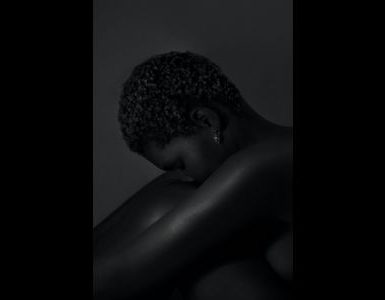Chest pain, fatigue, dizziness, lightheadedness, shortness of breath, pounding heartbeat, nausea. At first glance, these are the symptoms of COVID-19. However, they are also symptoms of both panic attacks and anxiety attacks. Anyone who has had an attack prior to 2020 would already know what to expect. What happens when someone in the midst of a pandemic has their first panic/anxiety attack? Well, that sends a lot of people down a spiral of emotions that have recently been named COVID anxiety or depression.
When talking to my doctor about this issue, she discovered that many people without preexisting mental health problems are now seeking help to cope with the pandemic. To understand how this occurs, I will first define anxiety and depression. Then delve into the role COVID can play in the exacerbation of these disorders. Finally, I will share some tips on coping with COVID anxiety or depression.
Depression
Mayo Clinic defines depression as a mood disorder that causes a persistent feeling of sadness and loss of interest. A depressed person may have trouble doing normal day-to-day activities or feel like life isn’t worth living. There are about twelve different types of depression. Some depressive episodes are barely noticeable to others and the person can still complete daily duties. This is called high functioning depression.
Other episodes can knock the person down completely, halting their life in its tracks. This is the common idea of depression most people envision. The scary thing is that both are equally detrimental. This is why it is important to check on loved ones constantly, even the “strong” ones. According to the Cleveland Clinic, over sixteen percent of people will experience some form of depression in their lifetime. Long term effects of depression are memory loss, risk of heart attack, and weakened immune system.
Anxiety
According to WebMD, anxiety disorder is characterized by feelings of worry or fear that are strong enough to interfere with one’s daily activities. Anxiety disorders include, but are not limited to, panic disorder, obsessive-compulsive disorder (OCD), post traumatic stress disorder (PTSD), and agoraphobia. The Anxiety and Depression Association of America states that eighteen percent of Americans experience anxiety disorder in a year. However, only eight percent receive treatment. It is also more prevalent in women.
Anxiety can be slightly more difficult to pinpoint than depression. This is because the idea of being anxious is expected in some scenarios. It gets renamed nervousness or being a worrywart. Unfortunately, this disorder can have long term physical effects on the body. Aside from mental distress, consistent anxiety can be linked to high blood pressure, heart disease, breathing issues, and digestive problems. This is due to anxiety frequently triggering the body’s fight or flight response unnecessarily.
The COVID Link
COVID induced anxiety and depression is the intense fear, worry, and sadness that is triggered by the idea of COVID-19. This presents itself in myriad ways. For example, having intense fear that you will catch and/or die from the virus. Feeling impending doom or guilt every time you leave your home. Compulsively dousing everything that enters said home with bleach. For people that have caught the coronavirus, this shows itself as PTSD even after they have recovered.
The most common symptoms of COVID-19 anxiety and depression according to CNN are loss of sleep, crippling helplessness, loss of interest, and thoughts of suicide. It is normal to occasionally experience some of these feelings. However, the presence of them for more than two days of the week are a cause for concern. Also, if the symptoms become so debilitating they interfere with work or school it’s time to seek help.
Panic vs. Anxiety Attack
Panic and anxiety attacks are the most noticeable physical responses to anxiety and depression. However, the two terms are not interchangeable. Healthline reports panic attacks happen suddenly and include intense and overwhelming fear. In contrast, an anxiety attack builds over time and includes feelings of worry and apprehension. They often get confused for each other due to the similarity in the physical response. Both can be attributed to a landslide of emotions that I have begun to call a spiral. The best way to describe it is a snowball effect. People have attacks simply because the symptoms of said attack are similar to COVID’s. At this point, it becomes almost impossible to separate the two because one causes the other. Once the spiral starts, other normal stressors begin to pile on, making it worse. So what can you do to create a sense of normalcy amongst the chaos?
How to Cope
The most important thing to do if you notice the onset of COVID anxiety or depression is to talk to a doctor. A doctor can point you in the right direction of a therapist or psychiatrist, if necessary. For people with health insurance, mental health is usually included in the coverage. The second best practice is to avoid your triggers.
This includes staying off of social media, avoiding the news stations, and not running errands during peak times. Prioritize self-care. This can be exercise, music, skincare, or even lighting a candle and meditating. Try to notice a spiral when it starts and journal it. Sometimes things begin to sound really ridiculous once you write it down and read it back to yourself.
Finally, do not be afraid of medications or other helpers. Antidepressants, Cannabidiol (CBD), stress relief vitamins can all be helpful depending on the severity of the condition.



















Add comment